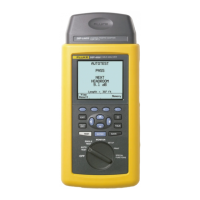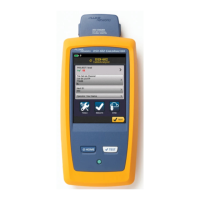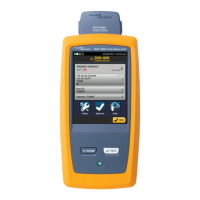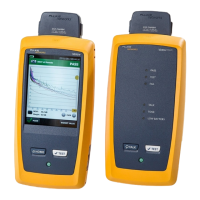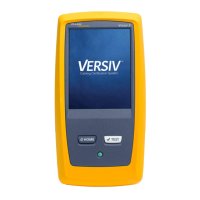DSP-4000 Series
Users Manual
2-8
Quick Configuration
The settings listed in Table 2-3 affect either the display format or the accuracy of
your test results. Following the table are instructions for changing the settings. For
a complete list of the test tool’s adjustable settings, refer to the later section
“Setup.”
Table 2-3. Quick Configuration Settings
SETUP Setting Description
Test Standard
and Cable Type
Select the test standard and cable type you are using. Fiber optic cable
testing requires a Fluke Networks DSP-FTA Fiber Test Adapter or a
Fluke Networks DSP-FOM (Fiber Optic Meter; comes with the DSP-FTK).
Report
Identification
Enter your company’s name, operators’ names, and site names. These
names appear in the Autotest reports you save.
Auto Increment
(cable ID setup)
Enabling this setting causes the last character of the cable ID to
increment each time you save an Autotest. The Sequence selection lets
you define a range of cable IDs by entering a start and end ID. On a
DSP-4300, the Cable ID List selection lets you select a list of IDs that was
created and saved on a memory card with LinkWare software.
Store Plot Data
(DSP-4100/4300)
Enable this setting to store plot data (from tests such as attenuation,
return loss, and NEXT) with Autotest results saved on a DSP-4100 or
DSP-4300 test tool.
Length Units Select meters or feet as the unit for length measurements.
Numeric Format Select a format (0.00 or 0,00) for display of decimal fractions.
Display and
Report Language
Select English, German, French, Spanish, Italian, Portuguese, or
Japanese.
Power Line Noise
Filter Frequency
Select the frequency of the ac power in your area. The test tool filters out
50 Hz or 60 Hz noise from measurements.
